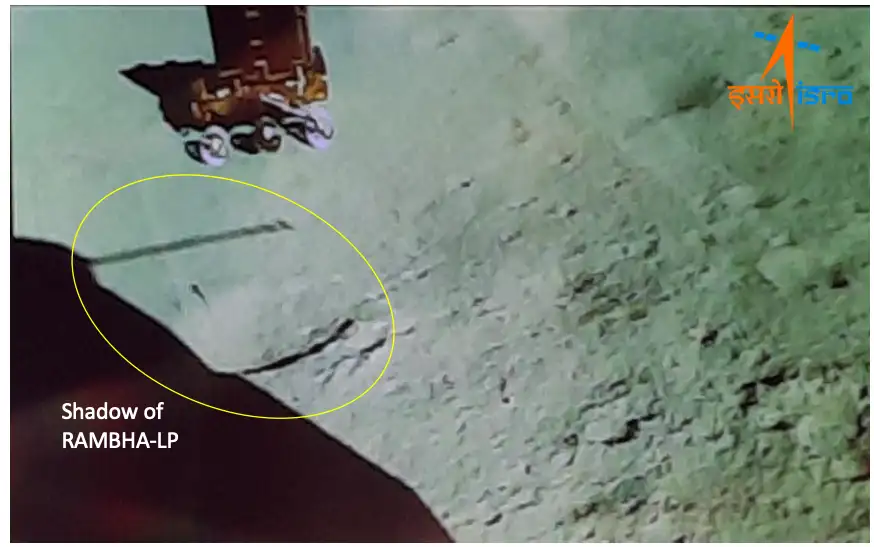First in-situ measurements of the surface-bound Lunar plasma environment over the south polar region have been carried out by the Radio Anatomy of Moon Bound Hypersensitive ionosphere and Atmosphere – Langmuir Probe (RAMBHA-LP) payload onboard Chandrayaan-3 Lander.
Langmuir (after Irving Langmuir) probe is a device used for characterising a plasma. It features a 5 cm metallic spherical probe mounted on a 1-meter boom attached to the Chandrayaan-3 Lander’s upper deck. The probe is deployed using a hold-release mechanism after the lander’s lunar touchdown. The extended boom length ensures that the spherical probe operates within the undisturbed lunar plasma environment, isolated from the lander’s body. The system can detect minute return currents, as low as pico-amperes, with a dwell time of 1 millisecond. By applying a sweeping bias potential ranging from -12 to +12 V in increments of 0.1 V to the Langmuir probe, the system can accurately determine ion and electron densities as well as their energies based on the measured return current.
Chandrayaan-3 Mission:
In-situ Scientific ExperimentsRadio Anatomy of Moon Bound Hypersensitive Ionosphere and Atmosphere – Langmuir Probe (RAMBHA-LP) payload onboard Chandrayaan-3 Lander has made first-ever measurements of the near-surface Lunar plasma environment over the… pic.twitter.com/n8ifIEr83h
— ISRO (@isro) August 31, 2023
The initial assessment indicates that the plasma encompassing the lunar surface is relatively sparse, characterized by a number density ranging from approximately 5 to 30 million electrons per cubic meter. This evaluation specifically pertains to the early stages of the lunar daytime. The Probe operates without interruption, aiming to explore the changes occurring in the near-surface plasma environment throughout the lunar day. These ongoing observations hold significant implications for comprehending the process of charging within the lunar near-surface region, particularly in response to the fluctuations in solar space weather conditions.
Development of RAMBHA-LP was led by Space Physics Laboratory (SPL), Vikram Sarabhai Space Centre (VSSC), Thiruvananthapuram.









